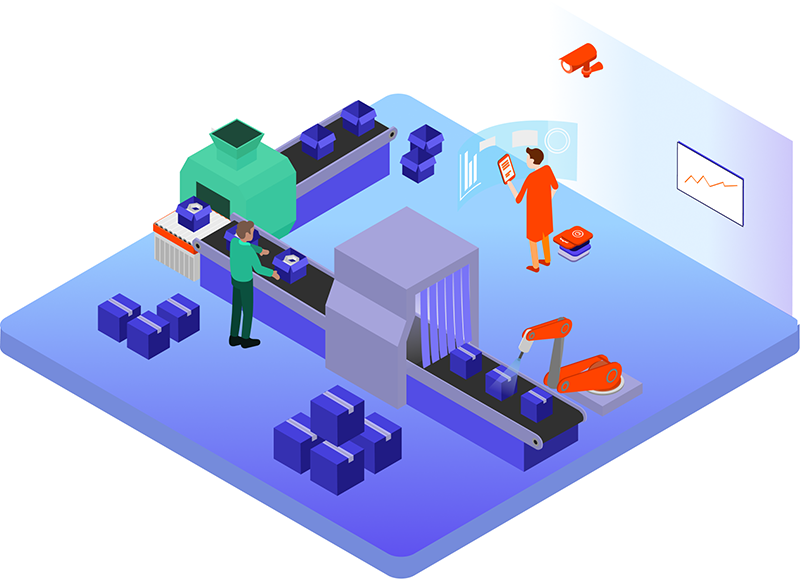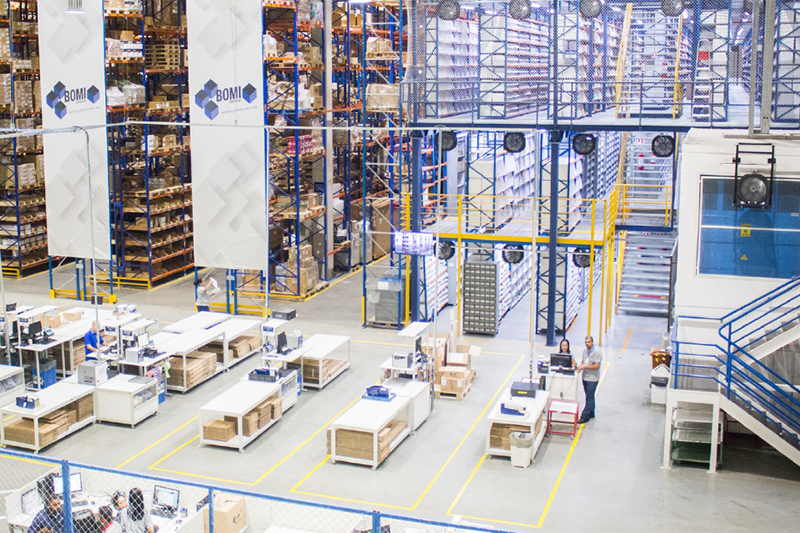Anton Wintersteller, Senior Business Development Manager at Security & Safety Things, talks to IFSEC Global about how AI and video analytics in surveillance cameras are being used to improve manufacturing and logistics processes – improving both business operations and employee safety.
 As global demand for produced goods continues to increase, new challenges have arisen for manufacturing organisations, as well as security and safety concerns along the supply chain. While security and operational requirements are changing, some ushered in by the COVID-19 pandemic, new technology offered by smart cameras is providing an entirely different way of monitoring and controlling safety measures and optimising process flow within the manufacturing and logistics operations. Ultimately, making logistics safer, while optimising operations within manufacturing plants – benefitting both businesses and customers.
As global demand for produced goods continues to increase, new challenges have arisen for manufacturing organisations, as well as security and safety concerns along the supply chain. While security and operational requirements are changing, some ushered in by the COVID-19 pandemic, new technology offered by smart cameras is providing an entirely different way of monitoring and controlling safety measures and optimising process flow within the manufacturing and logistics operations. Ultimately, making logistics safer, while optimising operations within manufacturing plants – benefitting both businesses and customers.
The vast potential of smart cameras – and the Internet of Things (IoT) – in manufacturing and logistics brings the power of automation to improve processes and safety. This is achieved by equipping cameras with powerful processors and Artificial Intelligence (AI), which already exceed the capabilities of human operators. The technical possibilities of smart cameras can detect issues that often go unseen by the human eye but have significant impact on efficiency of operations and overall customer experience.
Streamline inventory management and production
As any warehouse or manufacturing manager knows, the more goods being moved and the higher the turnover rate, the more complex it becomes to record individual units and their condition. Smart cameras can be used to manage manufactured goods, with video analytics in security cameras already helping manage large inventories in warehouse facilities.
As such, cameras do not have to be permanently installed in buildings, but instead could be located on drones, for example. These drones could move autonomously through inventory and capture data by scanning barcodes. When goods and boxes of different sizes have to be stored using a maximum efficiency of space, smart cameras can help to recognise incoming and outgoing items in real-time, according to size and format – enabling picking machines to sort them appropriately. The capabilities of computer vision technology will greatly improve the optimisation of storage in warehouse and manufacturing facilities.
Additionally, business intelligence applications running on a smart camera can reduce downtime by foreseeing potential interruptions or production jams and alerting staff in real-time, allowing them to take action immediately. These same cameras can be equipped with apps that analyse overall production flow to evaluate specific bottlenecks or occasional delays on the manufacturing floor. Facility staff can also use this information to optimise a manufacturing facility’s layout by analysing potential obstructions or obstacles that would prohibit efficient production.
Quality control, higher efficiency and security for logistics
Video analytics can assist warehouses and logistic service providers in successfully delivering the correct product to the right location and customer in original condition – accomplishments that require the supply chain to be both secure and efficient.

Throughout the manufacturing and shipping process, smart cameras can assist in monitoring the condition of packaging along the entire supply chain, detecting open or damaged boxes, providing automated detection of one of the major issues in logistics. The latest camera technology and intelligent software algorithms can analyse footage directly on the camera (edge-based processing) – detecting a damaged package at the loading dock before the delivery is accepted and the product is loaded onto a truck for delivery to the customer.
At the facility level, smart cameras can also alert drivers with incoming shipments of empty loading bays for offloading or alert facility staff of potential blockages or hazards for inbound and outbound vehicles that could delay delivery schedules that are planned down to the minute.
Cameras equipped with license plate recognition analytics (ANPR) can also support entry and exit management by detecting incoming and outgoing trucks. By doing so, manufacturing facilities and warehouses can utilise analytical insights for access control purposes and increase security by ensuring only authorised vehicles can enter.
Improve security and safety for plant or warehouse staff
Even though machines already perform many tasks today, people are still required to staff warehouses and many production plants. When forklift trucks pass by at high speed, or picking robots move heavy containers at dizzying heights, the health of workers must be protected. The first step is to ensure compliance with safety rules, as many accidents are caused by carelessness, improper use of machines, human error or personnel not complying with safety regulations. Smart camera solutions can monitor whether employees are wearing safety clothing, through the identification of hardhats, high visibility vests, work goggles, shoes and even special protection belts.

In the event an incident occurs, they assist in early detection when response time could be of critical importance. Similar to the prevention of break-ins and theft, smart cameras equipped with behavior detection can help to automatically recognise accidents at an early stage. For example, if a worker falls to the ground, or is hit by a falling object, the system recognises this as unusual behavior and reports it immediately.
As the demand for goods increases and production processes are required to become faster and more efficient every day, smart cameras can help individuals monitor security and operations in real-time. At the same time, the same cameras can seamlessly monitor and document the proper production, handling and transportation of goods – directly contributing to overall customer satisfaction. Smart cameras equipped with AI-enabled applications are providing a new technological solution for operational security, safety and efficiency that will no doubt become part of the tool kit for organisations looking for flexibility for safety and efficiency tools for their facility.
This article was originally published on IFSEC Global.
Why should you subscribe to the SHP newsletter?
Do you want the very latest health and safety news, product launches, job listings and expert opinions sent straight to your inbox daily?
The SHP newsletter is essential reading – sign up today to get your hands on all this!

 As global demand for produced goods continues to increase, new challenges have arisen for manufacturing organisations, as well as security and safety concerns along the supply chain. While security and operational requirements are changing, some ushered in by the
As global demand for produced goods continues to increase, new challenges have arisen for manufacturing organisations, as well as security and safety concerns along the supply chain. While security and operational requirements are changing, some ushered in by the 

